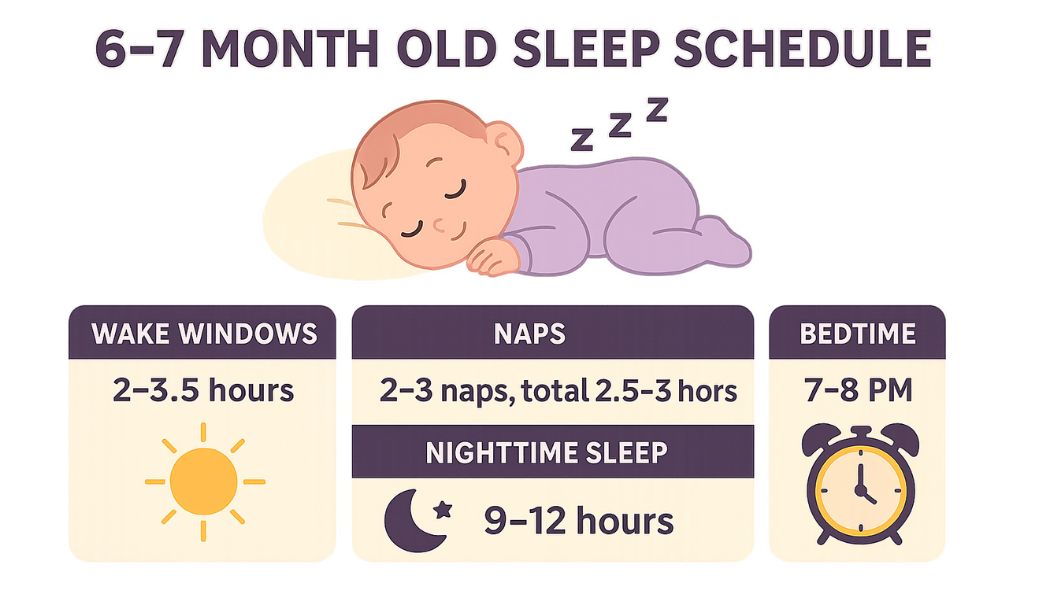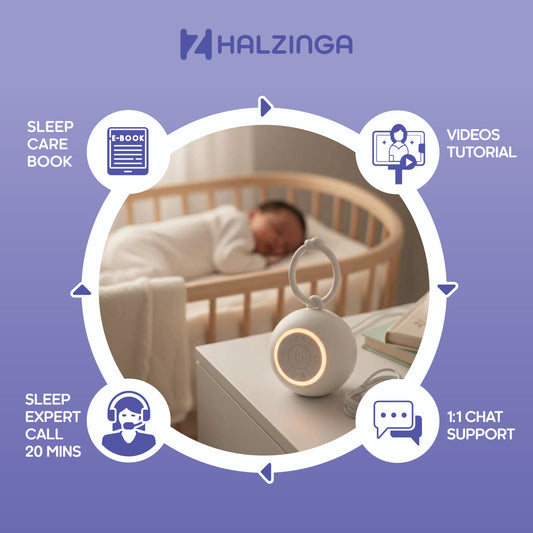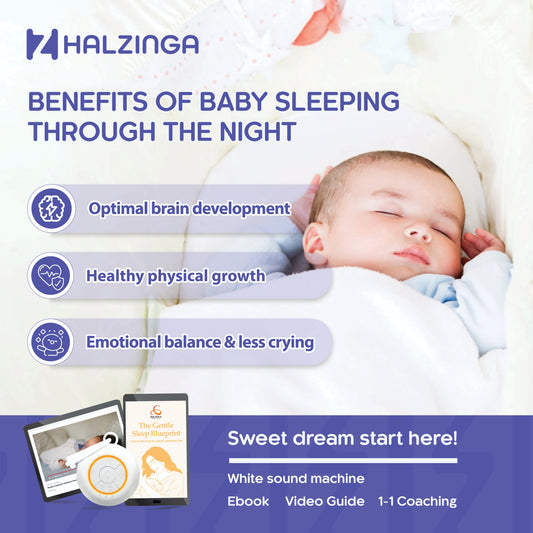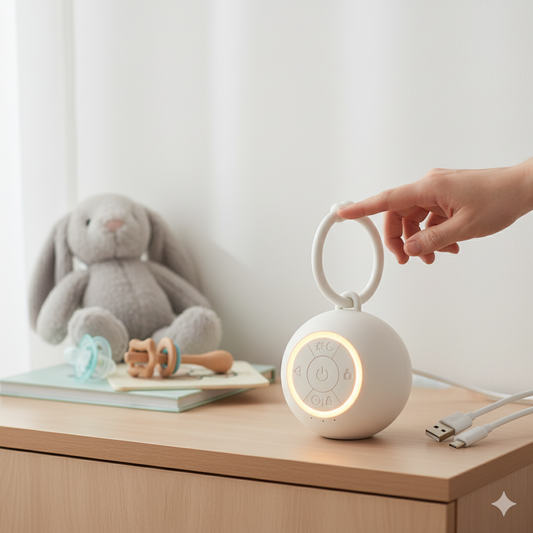
Naps vs. Night Sleep: Understanding Baby Sleep Cycles in the First 2 Years
Sleep is one of the most important factors in your baby’s growth and development during the first two years of life, yet it can also be one of the most puzzling for parents. Why does your baby seem to nap well during the day but struggle at night? Or why do some babies sleep for long stretches at night but resist daytime naps? Understanding the difference between naps and night sleep, and how baby sleep cycles evolve in the first two years, can help you create a rhythm that works for your child and brings more peace to your household.
How Baby Sleep Cycles Work in the First Two Years
Unlike adults, babies spend a greater portion of their sleep in active or light sleep phases. This means they transition more frequently between sleep stages and wake more often, particularly in the early months. In the newborn stage, sleep cycles last about 50 minutes, compared to 90 minutes in adults. Over time, as your baby’s brain matures, these cycles lengthen and consolidate, allowing for longer stretches of uninterrupted rest.
During the first year, babies gradually shift from sleeping almost equally during the day and night to concentrating more of their sleep at night. By the time your child reaches two years old, night sleep takes priority, but naps still remain an essential part of daily rest.
The Purpose of Daytime Naps
Many parents are surprised to learn that naps are not just breaks in the day, they are an essential component of a baby’s overall sleep health. Naps support brain development, memory consolidation, and mood regulation. When babies skip naps or nap poorly, they often become overtired, which can make bedtime more difficult.
The number and length of naps change significantly throughout the first two years. Newborns may nap frequently, sometimes four to six times a day, while one-year-olds usually transition to two naps. By 18 to 24 months, most toddlers move to a single midday nap. Parents often notice that when naps are skipped or shortened, their child becomes irritable and struggles to fall asleep at night, showing how closely daytime and nighttime rest are connected.
Why Night Sleep is Different
Night sleep plays a critical role in growth and development, particularly in physical restoration. During longer nighttime stretches, the body releases growth hormone and strengthens the immune system. Night sleep is also when babies and toddlers develop more consistent circadian rhythms, the internal clock that distinguishes day from night.
Unlike naps, which are shorter and lighter, night sleep includes longer periods of deep sleep. These deeper stages are crucial for physical repair, growth, and long-term memory storage. Because of this, establishing healthy nighttime routines early on can have long-lasting benefits.
The Balance Between Naps and Night Sleep
Striking the right balance between naps and nighttime sleep can be tricky. Too much daytime sleep can push bedtime later or cause multiple night wakings, while too little napping can lead to an overtired baby who fights sleep altogether.
Parents often find that a consistent schedule works best. For instance, maintaining regular nap times during the day helps ensure that the baby is tired but not overtired at bedtime. Creating a soothing pre-nap routine, such as dimming lights or reading a short story, signals to the baby that it’s time to rest without overstimulating them.
The Role of Environment in Sleep Cycles
The environment plays an important role in helping babies transition smoothly between naps and night sleep. A dark, quiet, and cool room promotes better rest, whether it’s midday or nighttime. Many parents find that a white noise machine can be particularly helpful. Babies are accustomed to the constant sounds of the womb, and sudden noises in the home can disrupt their sleep cycles. A white noise machine provides a steady and soothing background sound, masking household noise and helping babies connect their sleep cycles without waking.
Using white noise consistently for naps and nighttime helps create a familiar auditory cue that signals rest. It also helps babies distinguish sleep times from playtime, reinforcing the difference between active hours and quiet hours.
How Sleep Evolves During the First Two Years
Sleep patterns change dramatically between birth and a child’s second birthday. In the first three months, babies sleep around the clock with no clear distinction between naps and night. By six months, many babies begin to consolidate sleep into longer nighttime stretches and two or three naps a day. Around the first birthday, nighttime sleep typically becomes more stable, lasting 10 to 12 hours, with two naps during the day. By 18 months, most toddlers transition to one nap, which continues until about age three.
This evolution reflects not just growth but also brain development. As the brain matures, sleep cycles lengthen and circadian rhythms strengthen, making the distinction between naps and night sleep clearer. Parents who understand this progression are better prepared for transitions, such as dropping from three naps to two, or from two naps to one.
Supporting Healthy Sleep at Every Stage
To support your baby’s sleep during the first two years, consistency is key. Establish predictable routines for both naps and bedtime so your baby learns to recognize the cues for rest. Keep the sleep environment calm and consistent, whether it is nap time or night sleep. Avoid overstimulation before sleep, such as bright lights or loud play, and instead focus on calming activities like gentle rocking, lullabies, or reading.
Pay attention to wake windows, which are the periods your baby is awake between naps. Keeping your baby awake for too long can lead to overtiredness, while putting them down too soon may mean they are not ready to sleep. Over time, you’ll begin to recognize your baby’s natural rhythms and adjust nap and night schedules accordingly.
Final Thoughts
Understanding the difference between naps and night sleep is one of the most valuable tools for parents navigating the first two years of their baby’s life. Both forms of sleep serve unique purposes, naps recharge your baby’s brain throughout the day, while nighttime sleep provides deeper restoration and growth. Striking the right balance between the two helps create a rhythm that supports healthy development and calmer nights.
By creating a soothing sleep environment, using tools like a white noise machine, and sticking to consistent routines, you can help your baby transition smoothly between naps and nighttime rest. While sleep patterns will continue to evolve as your child grows, building strong foundations early on will lead to healthier sleep habits that last well beyond the toddler years.








